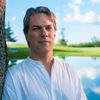The final essay Oliver Sacks published before his death concerned the religious duties of keeping the Sabbath. He reflects on his upbringing in an Orthodox Jewish home in England, noting the shared foods and family time of Sabbath together. The last sentence Sacks published during his lifetime -- as he so clearly saw his life coming to an end -- is this:
I find my thoughts drifting to the Sabbath, the day of rest, the seventh day of the week, and perhaps the seventh day of one's life as well, when one can feel that one's work is done, and one may, in good conscience, rest.
I shudder a little as I re-read this, aware that this was the last we heard from Dr. Sacks; at once sad for his passing and glad for his life lived well. His was a life that touched so many of us in so many ways, patients and readers, friends and editors, family and fellow scientists alike.
Yet, his is not a story of an atheist in a foxhole, not a story of someone "finding God" at the end of life. Sacks' story does not have that finale. But his is a spiritual story nonetheless, in the deeper understanding of what we talk about when we talk about religion.
Before and beyond some recourse to the gods or anything supernatural, we find the religious impulse operating in his second-to-last essay in the Times, "My Periodic Table." Here, Sacks reminisces on the periodic table of elements, using the elegant scientific chart as a lens to review the places he has traveled and years he has lived, as if each little square of the table links with little squares of his own life. As he lay dying, he found comfort in the material objects that are the elements themselves, with little boxes of thallium, lead, and bismuth scattered around his tables. He says, "I am again surrounding myself, as I did when I was a boy, with metals and minerals, little emblems of eternity."
Sacks was not interested in "eternity" in any theological sense of that term. Rather, his impulses are not far from what sociologist of religion, Peter Berger, once discussed as a "sacred canopy" that spreads over the worlds people live within. And there are many worlds. The canopy is a protective device that keeps these worlds running, provides a sense of order, gives us a comprehension of the way things really are. The sacred canopy connects the "here below" to the "up above," connects the social order to the cosmic order, and ultimately making us feel what we are doing really matters.
We can think of the periodic table as a schematic diagram of one version of the sacred canopy. It's a chart, a grid, a map, of the way things are. If we understand it well enough, and the physical reality it is based upon, we can find our way into the basic structures of our world. The periodic table tells us there is an order to things, there is a way of grasping the fundamental grammar of the materials of the planet earth and, perhaps, beyond.
Sacks relates his world to the larger order of the world precisely in this way, titling the essay "My Periodic Table." In his essay, he recounts going out into the country and looking at the night sky, describing the vision through the words of John Milton as a sky "powdered with stars." And he hoped to be wheeled outside one last time before he died to see the sky again, one last visual connection between his world and eternity.
As a scholar of religious studies, I've been reading Sacks for years, often assigning texts by him to my students. His essay "To See and Not See" helps introduce a course on religious visual culture, telling us how ways of seeing are highly constructed through social habit. And his many stories in Hallucinations lead us into comprehensions of mind-altering substances used in religious rituals, as well as the visions and apparitions of mystical experience. As his essays waver and wobble from geology to philology, neuroscience to the visual arts, my students and I have learned a great deal from Sacks about the structures of our worlds, our sacred canopies.
This past summer, I drove across the United States and listened to the audio version of Sacks' autobiography, On The Move. The title seemed appropriate to my drive, but more importantly my movement through space seemed an appropriate way to understand Sacks' restless life. He borrows his title from the poem of his longtime friend, Thom Gunn. Gunn's poem, which Sacks recounts in his autobiography, ends with the line, "One is always nearer by not keeping still."
Sacks' life story teems with adventure, risk and tales of derring-do. Experiments were made on motorcycles, on journeys, and, most crucially, on himself.
Along the paths of many religious seekers before him, he journeyed, he experimented, he found new doors of perception in mind-altering substances, and enlightened visions as he spoke with his patients. An independent spirit, Sacks nonetheless entrusted himself to many guides along the way, elders who nudged, instructed, and shared their own stories. He took the insights he learned, and found ever new ways to apply them. From one guide along his path, he learned to always know the place you travel to, know something about its flora and fauna, and its geological history. It's clear he applied this to his various environments, as well as to his patients: to know them and their history.
Like many, I tracked his final months after his public February announcement of having metastasized cancer, eagerly awaiting his next essay to appear while knowing the next news I read may instead be his obituary. Along the way, he became a guide for me as well.
I only hope he was able to see the powdered sky one last time.
